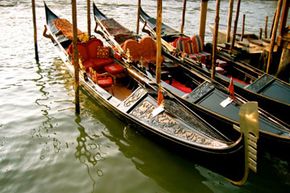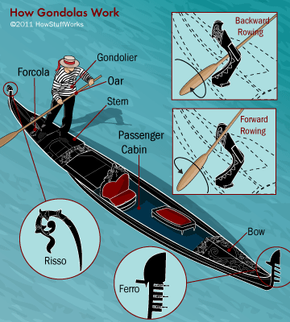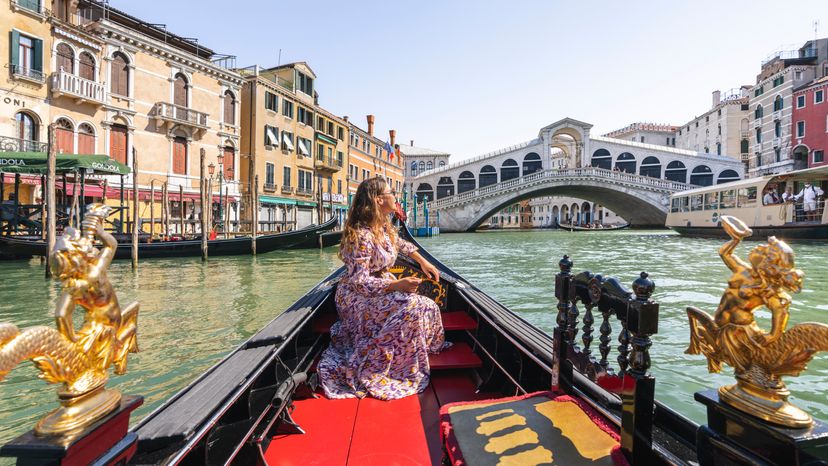On Sept. 12, 1846, the English poets Robert Browning and Elizabeth Barrett eloped, fleeing London and Barrett's tyrannical father who forbid her to marry. Where does a couple go when they're young, in love and on the lam? In the Browning's case, it was Italy. They went first to Pisa, then to a tiny bohemian apartment in Florence and eventually to the town of Asolo, just outside Venice. There, Robert Browning wrote the poem "In a Gondola," which details, what else, but kissing: "Kiss me as if you made believe / You were not sure ... Kiss me as if you'd enter'd gay / My heart at some noonday."
But Browning certainly wasn't the first or the last to dream of smooching his beloved aboard a gondola. Since Italian gentry first drifted the city's canals during the Renaissance, the gondola has been both a symbol of Venice and of the romance that is inextricably linked with the city. The love affair of 19th-century writers George Sand and Alfred de Musset played out in Venice; there's even record of a lovers' quarrel that included a gondola ride. The same can be said for actress Eleonora Duse and poet and playwright Gabriele d'Annuzio's late 19th-century Venetian affair.
Advertisement
And don't ever let it be said that the famous Greek soprano Maria Callas struggled to make an entrance. When meeting her husband-to-be, Aristotle Onassis, for the first time, she made sure to arrive fashionably late to the Palazzo Castelbarco via gondola [source: Edwards].
The gondola is the ultimate in romance. If you want to partake of this romance, or at least be able to talk intelligently enough about it to imply that you could, you need to know the ins and outs of gondola culture. How and when did the gondola begin?
Advertisement















